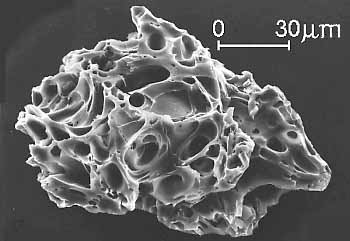jimpeel
Well-Known Member
It is said that if Yellowstone's "supervolcano" cooks off it could wipe out about a fourth of the population of the United States.
There was even a DOCUDRAMA made on this type of event.
Read more on Yellowstone HERE
http://www.foxnews.com/story/0,2933,309738,00.html
If you think this would be a minor event that would not affect you, check this graphic on the size of various volcanic eruptions. Note where Mt. St. Helens resides and then consider how the possibilities of Yellowstone dwarf it.
The last eruption 640,000 years ago formed a caldera 35 miles wide by 50-miles long. That's a lot of earth to move in an instant.
I live in the Denver area and there is a great chance that in the event Yellowstone should cook off that I, and most everyone else here, will be killed.

There was even a DOCUDRAMA made on this type of event.
Read more on Yellowstone HERE
http://www.foxnews.com/story/0,2933,309738,00.html
Yellowstone Lava Dome Filling Up Quickly
Thursday, November 08, 2007
AP
WASHINGTON — Yellowstone National Park, once the site of a giant volcano, has begun swelling up, possibly because molten rock is accumulating beneath the surface, scientists report.
But, "there is no evidence of an imminent volcanic eruption," said Robert B. Smith, a professor of geophysics at the University of Utah.
Many giant volcanic craters around the world go up and down over decades without erupting, he said.
Smith and colleagues report in Friday's issue of the journal Science that the flow of the ancient Yellowstone crater has been moving upward almost 3 inches per year for the past three years.
That is more than three times faster than ever observed since such measurements began in 1923, the researchers said.
"Our best evidence is that the crustal magma chamber is filling with molten rock," Smith said in a statement. "But we have no idea how long this process goes on before there either is an eruption or the inflow of molten rock stops and the caldera deflates again."
It's not unusual for ancient volcano sites like Yellowstone and Long Valley, Calif., to rise and fall, according to the researchers.
The Yellowstone volcanic field was produced by what the researchers described as a plume of hot and molten rock beginning at least 400 miles beneath Earth's surface and rising to 30 miles underground, where it widens to about 300 miles across.
Blobs of molten rock sometimes rise to refill the magma chamber beneath Yellowstone.
The volcano at Yellowstone produced massive eruptions 2 million, 1.3 million and 642,000 years ago, all larger than the 1980 eruption of Mount St. Helens.
Site of the famed Old Faithful and hundreds of other geysers, Yellowstone sprawls across parts of Wyoming, Montana and Idaho.
If you think this would be a minor event that would not affect you, check this graphic on the size of various volcanic eruptions. Note where Mt. St. Helens resides and then consider how the possibilities of Yellowstone dwarf it.
The last eruption 640,000 years ago formed a caldera 35 miles wide by 50-miles long. That's a lot of earth to move in an instant.
I live in the Denver area and there is a great chance that in the event Yellowstone should cook off that I, and most everyone else here, will be killed.





